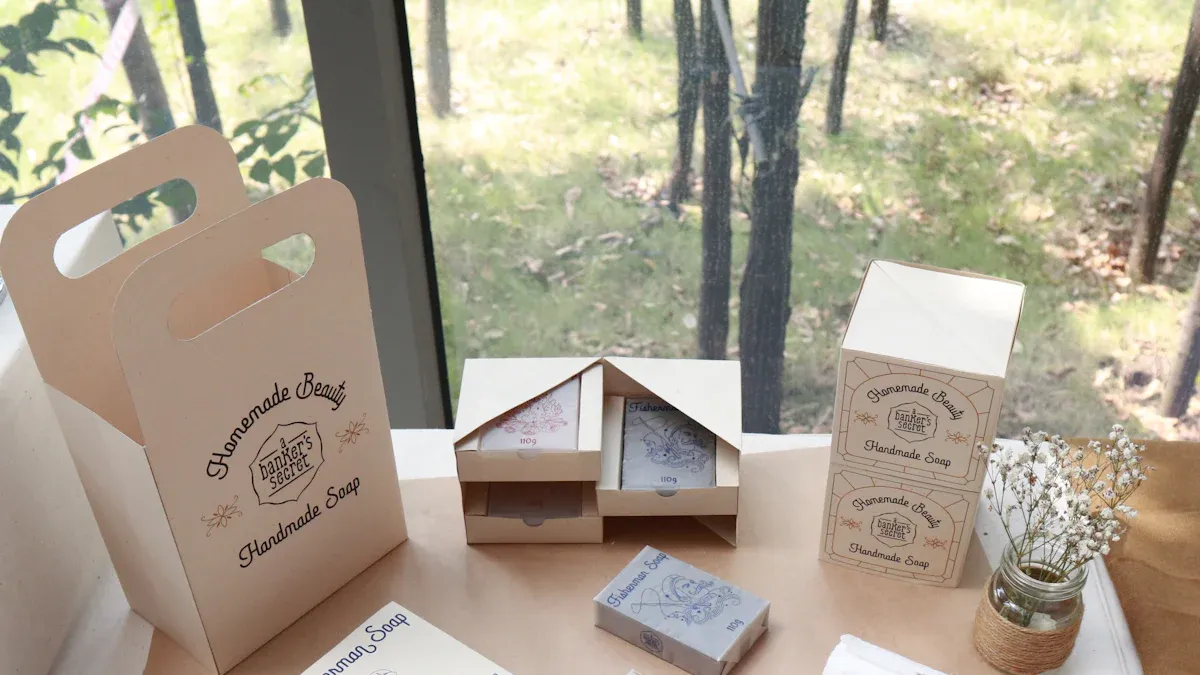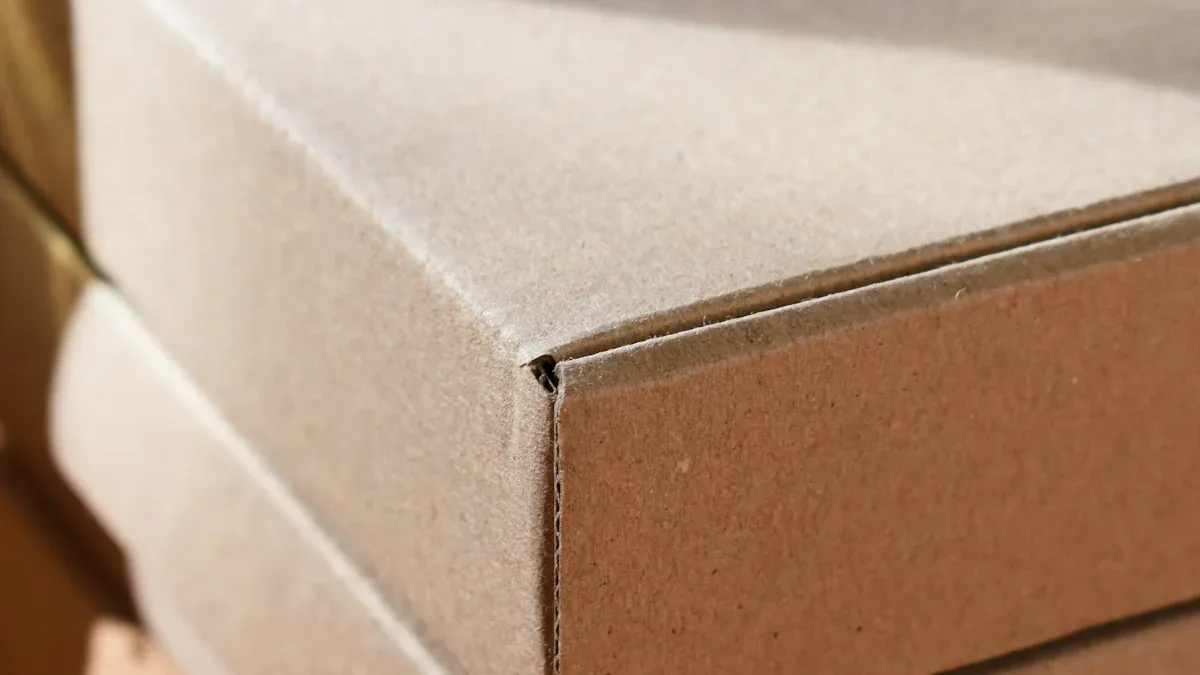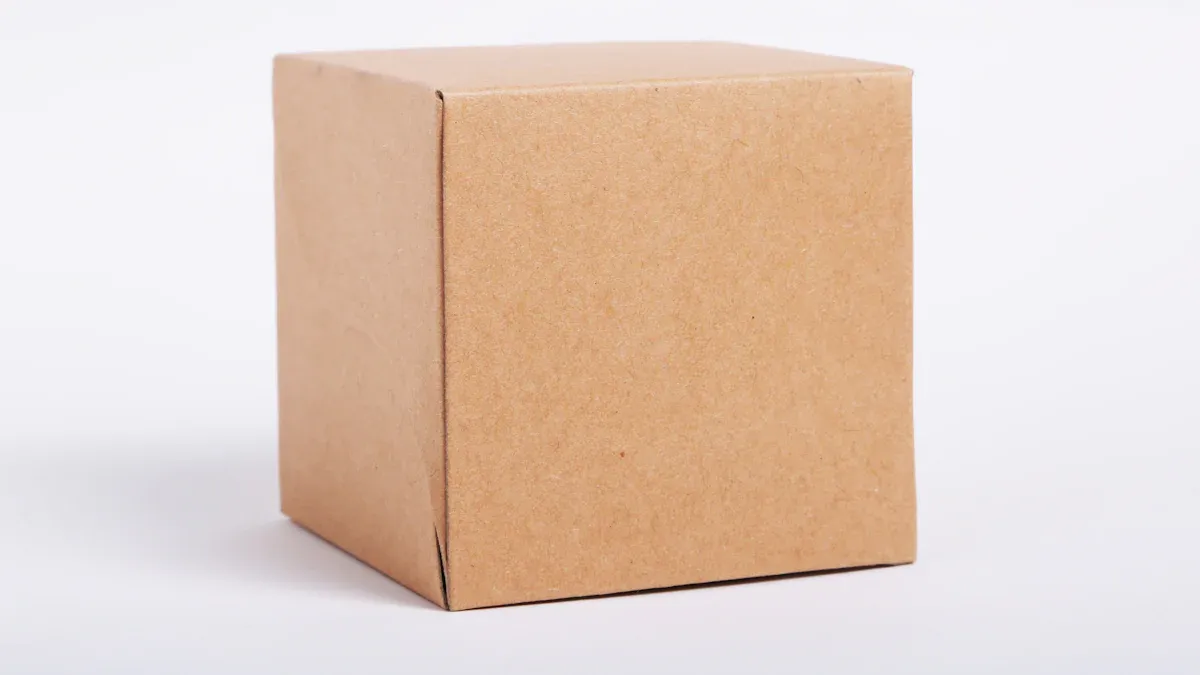Understanding Paperboard and Its Unique Properties

Paper board is a strong, thick paper material. You see it in many products, like food boxes and other goods. It is important in many industries because it can be recycled and is good for the environment. The need for eco-friendly packaging is growing. This change shows that paper board is a flexible choice. It gives you lightweight and affordable materials while helping the planet.
Key Takeaways
Paperboard is a strong and green material. It is used in many products, making it a good choice for packaging.
There are different types of paperboard. Solid Bleached Sulfate and Coated Unbleached Kraft have special uses in different industries.
Paperboard is light but strong. This helps lower shipping costs and keeps products safe during transport.
Recycling paperboard is simple and helpful. It saves trees and cuts down waste in landfills.
Using paperboard can make your brand look better. It attracts customers who care about the environment.
Types of Paperboard

When you look at paperboard, you will see different types. Each type has special features and uses. Knowing these types helps you pick the right paperboard for what you need. Here are some common types of paperboard:
Type of Paperboard | Characteristics | Common Applications |
|---|---|---|
Solid Bleached Sulfate (SBS) | This high-quality type is very white and smooth. It is great for printing. | You often find it in food boxes, makeup, dairy items, and medical supplies. |
Coated Unbleached Kraft (CUK) | This type is made from natural brown kraft fiber. It is very strong. | It is good for drink containers and heavy retail packaging. |
Coated Recycled Paperboard | This paperboard is made from recycled materials. It has a smooth surface for printing. | You can see it in laundry soaps, dry foods, and many paper items. |
Non-Bending Chipboard | This thick paperboard is made from old newspapers. It is used for sturdy boxes. | It is popular for small luxury items in makeup, electronics, and jewelry. |
Each type of paperboard has its own job in packaging. The choice of paperboard depends on what the product needs and how it should look.
Tip: When choosing paperboard for packaging, think about strength, print quality, and how it affects the environment.
Industry reports give useful information about how these types of paperboard are used. For example, the "Paperboard Packaging Industry Report and Trends Report 2025" shares data on market size, growth, and types. This helps you see what is happening in the paperboard market.
By learning about the different types of paperboard, you can make smart choices for your packaging. Each type has special benefits for different industries and uses.
Unique Properties of Paperboard

Paperboard is special because of its unique properties. These features make it a great choice for many uses. Knowing these properties helps you see why paperboard is important in packaging and other areas.
Strength and Durability: Paperboard is very strong. It can handle pressure and hits, which makes it good for fragile items. Research shows that paperboard has special ways of working when it is squeezed. It shows that strain builds up on the outside, while the middle changes more when pressed. This shows how tough it is compared to other materials.
Lightweight Nature: Even though it is strong, paperboard is light. This makes it easy to carry and ship, which lowers costs and helps the environment. You can see paperboard in many forms, like boxes and cartons, all using this light feature.
Recyclability: One big plus of paperboard is that it can be recycled. About 68% of paper gets recycled, showing good recycling systems. Corrugated cardboard, a kind of paperboard, has a high recycling rate of 91.4%. This is because of its strong fibers and the need for recycled materials. Recycling one ton of paper saves 17 trees, showing how good paperboard is for the planet.
Eco-Friendly: Paperboard comes from renewable resources, making it good for the environment. Its making often uses sustainable methods, which makes it popular today. As people care more about the environment, the need for eco-friendly packaging keeps growing.
Versatile Applications: The unique properties of paperboard allow it to be used in many ways. You can find it in food packaging, cosmetics, electronics, and more. Its easy printing also makes it great for branding and marketing.
Applications of Paperboard Packaging
You can see paperboard packaging in many everyday items. Its flexibility makes it a popular choice in different industries. Here are some main uses of paperboard packaging:
Food Packaging: Paperboard is very important for food packaging. You find it in takeout boxes, cereal containers, and frozen meals. Its strength keeps food safe while being moved. Also, its eco-friendly nature attracts people who care about the environment.
Cosmetics and Personal Care: Many beauty brands use paperboard for their packaging. You can see it in boxes for makeup, skincare, and perfumes. The smooth surface allows bright printing, making products look nice.
Electronics: The electronics industry also uses paperboard packaging. You often see it in boxes for gadgets and accessories. Paperboard protects items while being light, which helps lower shipping costs.
Custom Packaging: More businesses are choosing custom packaging made from paperboard. This helps brands create unique designs that catch the eye on shelves. Custom packaging helps people remember the brand and attracts customers.
Retail Packaging: Stores use paperboard for many products, like clothes and toys. Its strength makes sure items stay safe during handling and display.
Recent reports say the Asia-Pacific region will lead the paperboard packaging market. More people are buying consumer electronics packed in paperboard, which helps this growth. Also, the need for ready-to-eat meals in paperboard will boost the market. In North America, big companies are expected to grow from 2023 to 2030. More people are aware of sustainability, which will increase the benefits of paperboard packaging in this area.
Tip: When thinking about packaging choices, consider how paperboard can fit your needs while being eco-friendly.
By learning about these uses, you can see how important paperboard is in packaging. Its unique features make it essential for many products, ensuring safety and sustainability.
Advantages of Using Paperboard for Packaging
Using paperboard for packaging has many benefits for businesses and customers. Here are some important reasons to think about paperboard for your packaging:
Eco-Friendly: Paperboard is biodegradable and comes from renewable resources. It breaks down naturally, which helps reduce waste in landfills. About 67.9% of paper gets recycled in the U.S. This shows its good impact on the environment. Choosing paperboard supports sustainable practices.
Cost-Effective: Paperboard packaging usually costs less than plastic. Lower production and shipping costs make it a smart choice for businesses. You can save money while still giving quality packaging for your products. This meets the growing demand for sustainable options.
Versatile Design Options: Paperboard allows for creative designs. You can easily print bright colors and images on it. This helps your products stand out on store shelves. Attractive packaging can draw in more customers and increase sales.
Lightweight and Strong: Even though it is light, paperboard is strong and durable. It protects your products during shipping and handling. This strength makes sure items arrive safely, lowering the chance of damage.
Consumer Preference: Many shoppers today like eco-friendly packaging. They are more likely to pick products that use sustainable materials. By using paperboard, you can attract this growing group of environmentally aware customers.
Tip: When choosing packaging, think about how paperboard can improve your brand's image while being good for the planet.
By knowing these advantages, you can understand why paperboard is a popular choice for packaging in many industries. Its eco-friendly features, cost savings, and flexibility make it a great option for your packaging needs.
In short, paperboard is very important in many industries. Its special features, like strength, light weight, and ability to be recycled, make it a great choice for packaging. You can see paperboard in food, beauty products, electronics, and custom designs.
In the future, the paperboard packaging market will grow a lot. It is predicted to rise from US$ 223.9 billion in 2024 to US$ 351 billion by 2034. This growth shows that more people want eco-friendly packaging. As shoppers choose biodegradable materials, paperboard will stay important for helping the environment.
Tip: Using paperboard helps your products and supports a healthier planet.
FAQ
What is paperboard made from?
Paperboard comes from wood fibers found in trees. Companies turn these fibers into a thick, strong material by pulping and pressing them. They can also recycle old paper products in this process.
How is paperboard different from cardboard?
Paperboard is thicker and denser than cardboard. Both are made from paper fibers, but paperboard usually has a smoother surface. It is often used for smaller items, while cardboard is for larger boxes.
Can paperboard be recycled?
Yes, you can recycle paperboard. It goes with regular paper products. Many recycling centers accept it, making paperboard a good choice for the environment.
Is paperboard safe for food packaging?
Yes! Many types of paperboard are safe for food. Companies treat paperboard to meet safety rules for food contact. This makes it a popular option for food items.
How can I choose the right type of paperboard for my needs?
Think about the product's weight, how strong it needs to be, and the print quality you want. Each paperboard type has special features for different uses. Researching these choices will help you decide.
